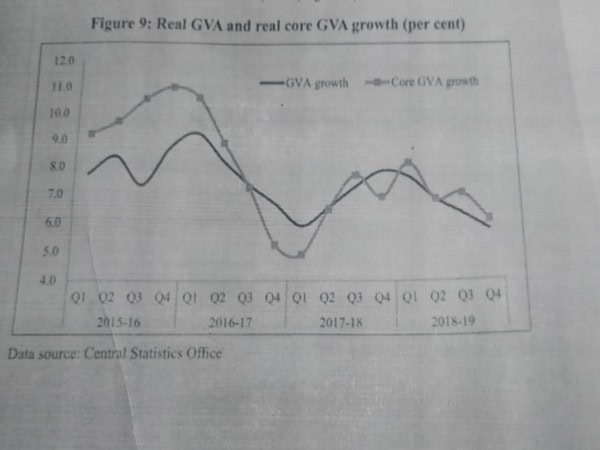New Delhi: The core gross value added (GVA) was higher for all quarters of 2018-19 than overall GVA growth as agriculture and allied, public administration and defence experienced the largest decline in growth rates relative to other sectors, says the Economic Survey 2018-19 report which Finance and Corporate Affairs Minister Nirmala Sitharaman tabled in Parliament on Thursday.
“For all quarters in 2018-19, the core GVA was higher than overall GVA growth as ‘Agriculture and allied’ and public administration, and defence experienced the largest decline in growth rates relative to other sections,” the survey said.
In quarter four of 2018-19, the growth of core GVA was decelerated by one percentage point over the previous quarter, largely on account of lower growth in the manufacturing sector.
“Core GVA, except agriculture, showed higher growth than that of overall GVA in 2018-19. Core GVA growth picked up from 6.5 per cent in 2017-18 to 7.0 per cent in 2018-19, whereas GVA growth slowed down marginally from 6.9 per cent in 2017-18 to 6.6 per cent in 2018-19,” it said.
The increase in Wholesale Price Index (WPI) inflation was broad-based, which saw increase inflation of all the groups except food in 2018-19.
To achieve the objective of becoming a USD 5 trillion economy by 2024-25, as laid down by Prime Minister Narendra Modi, India needs to sustain a real GDP growth rate of 8 per cent international experience, especially from high-growth East Asian economies.
It suggests that such growth can only be sustained by a “virtuous cycle” of savings, investment and exports catalysed and supported by a favourable demographic phase.
The Survey aims to enable a self-sustaining virtuous cycle. The survey model stems from two key departures from the traditional view. First, the Survey departs from the concept of equilibrium as a key tenet, which is being challenged increasingly following the Global Financial Crisis. Second, the traditional view often attempts to solve job creation, demand, exports and economic growth as separate problems.
The survey makes the case for investment as that key driver. By presenting data as a public good, emphasizing legal reform, ensuring policy consistency and encouraging behaviour change using principles of behavioural economics.
[source_without_link]ANI[/source_without_link]

